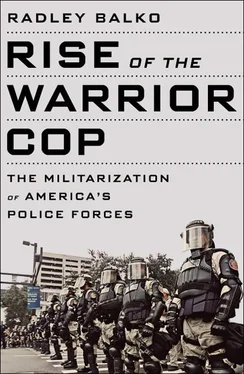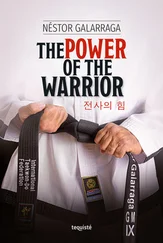Nixon and Ambrose had wanted to generate publicity for the president’s drug war. They certainly accomplished that. But it was increasingly clear that Nixon’s tough-on-crime innovations had gone too far, and far too fast. In the fall of 1973, no-knock critics moved ahead with new legislation to halt the raids. Sam Ervin was, of course, at the front of the effort, along with Republican Illinois senator, Charles Percy, who had actively supported the no-knock laws in 1970. The stories of his own constituents getting terrorized apparently changed his mind. Ervin and Percy introduced two bills, both of which were cosponsored by Republican senator Jacob Javits of New York and Democratic senator Gaylord Nelson of Wisconsin. The first, proposed as an amendment to a DEA appropriations bill, repealed the no-knock provision for both Washington, DC, law enforcement and for federal narcotics agents. The second bill made the federal government liable for damages in cases of raids gone awry. Percy took the lead on publicly advocating for the changes, given that he had once supported the no-knock law. “If the past few months have taught us anything, it is that excessive zeal, even in the pursuit of so worthy a purpose as drug law enforcement, cannot be allowed to destroy the fundamental rights of American citizens.” No-knock had created an atmosphere, Percy said, “where, on occasion, doors are kicked in, residents are terrorized, property is destroyed, lives are irreparably scarred, and, for the sake of administrative convenience, questions and answers are dealt with later.” 77
In July 1974, the Senate voted 64–31 to repeal the no-knock law, both in DC and for federal agents. Sam Ervin declared the vote a victory for “the privacy of the individual and the sanctity of the home.” Senator Hruska, the Nebraska Republican who had been pushing the no-knock provision since 1968, continued to defend the tactic, telling the UPI news service, “There has to be a balancing between law enforcement and personal rights.” Percy, having come full circle, called no-knocks “police state tactics.” 78On October 28, 1975, the new president, Gerald Ford, signed the bills into law. 79
The most notable thing about America’s early 1970s experiment with the no-knock raid is that it was repealed. Even in the midst of the era’s antidrug fervor, a good number of politicians and public officials who supported the initial law were capable of changing their minds—they could display some shame and remorse for the harm and injury caused by the policy. A major-city police chief like Jerry Wilson could successfully fight crime without feeling compelled to send cops barreling into private residences, even when given the green light to do so—and by no less than the president himself. Embarrassed members of Congress who passed the initial law were not only capable of revoking it, but could pass an additional law holding the government more accountable should the abuses continue. The federal government even indicted twelve of its own law enforcement officers for mistakenly raiding the wrong home. (A jury later acquitted them.) The drug war and all its militarizing accoutrements were not yet intractable.
Even Egil Krogh, one of Nixon’s fiercer antidrug zealots (who would later go to prison for his role in Watergate), told PBS Frontline in 2000, “Some programs that were initiated, in retrospect, got too close to breaching the wall of what is not acceptable under the Fourth Amendment. I know the ‘no-knock’ authority was one…. Those kinds of programs can lead to abuses, and they have.” 80
Don Santarelli—father of the federal no-knock raid—is far more compunctious. When asked to reflect on the legacy of Nixon’s drug war in an interview for this book, he says it set in motion an animosity between police officers and the public that may now be beyond repair. “When you speak to a police officer today, you’re terrified that you’re going to offend him, and that he’s going to arrest you and take you off to jail. Sure, a judge will let you out and drop the charges in a few days. But you’ve spent those days in jail. And now you have an arrest record. There’s just no accountability for excessive force.” He adds that his old boss’s war rhetoric, later taken up by President Ronald Reagan and his successors, is to blame. “There has always been confrontation between the rational, educated way to look at policy and the escalation of language to make a political point. If politicians can get away with calling it a ‘war on crime’ or a ‘war on drugs,’ then they will. And yes, that’s going to make law enforcement more willing to push the envelope when it comes to the use of force.” 81
After Nixon left office in the fall of 1974, the federal drug war went into a brief period of détente. But the SWAT concept would continue to gain momentum, independent of the break in the drug war. The two institutions would finally merge in the 1980s with Reagan’s revival of the Nixonian drug war, applied more literally than even Nixon could have imagined. No-knock raids would return in full force, this time with no room for shame or remorse.

IN NOVEMBER 1973, FOUR YEARS AFTER THE BLACK PANTHER raid, Daryl Gates’s SWAT team engaged in another nationally televised shoot-out. This one was with the Symbionese Liberation Army (SLA), a bizarre, cultish, often incoherent, violent band of leftists who borrowed imagery and rhetoric from the Black Panthers, Che Guevera, and Mao Tse-tung, and influence from a variety of religions and mystical traditions. 82After two of its members were convicted and imprisoned for murdering an Oakland high school principal, the SLA hatched a plan to kidnap newspaper heiress Patty Hearst, then release her in exchange for the release of their imprisoned leaders.
But a couple months after she had been kidnapped, Patty Hearst was seen in a surveillance photo toting a machine gun during an SLA bank robbery in San Francisco. Her conversion and the now-iconic bank robbery photo was an irresistible story. The SLA had the country’s attention.
In May 1974, SLA leader “Cinque” (real name: Donald DeFreeze) decided to move the group south to Los Angeles. On May 16, SLA activists William and Emily Harris entered a sporting goods store in Inglewood, California, to purchase some clothes. As they left, a security guard confronted William Harris, who had attempted to steal additional pairs of socks. Harris produced a revolver, which the guard promptly smacked from his hand. Patty Hearst was waiting outside on armed lookout. When she saw the confrontation between Harris and the security guard, she squeezed off fifty rounds from her machine gun. Miraculously, no one was hurt. The SLA fled.
By the afternoon of May 17, the FBI and LAPD had received tips indicating the SLA was hiding out in four houses in the southeastern part of the city. By 5:30 PM, more than two hundred LAPD officers had formed a perimeter around the area. As people emerged from the other suspected houses, the police concluded that the SLA had congregated in one house, located at 1466 East Fifty-Fourth Street. Gates positioned twenty-five SWAT team members around the house, including eight-man teams to the front and rear. Sgt. Ron McCarthy, the squad leader of SWAT Team One, pulled out a bullhorn. “People in the yellow house with the stone porch, address 1466 Fifty-Fourth Street, this is the Los Angeles Police Department speaking,” he announced. “Come out with your hands up. Comply immediately and you will not be harmed.”
The first to emerge was a terrified eight-year-old boy. A police officer picked him up and escorted him to safety. Moments later, an adult black male came out and walked over to the police line on his own accord. The man told police that the occupants weren’t armed. But when the boy calmed down, he told a different story. They were all armed, he said. Well armed, in fact. He’d seen several of them wearing ammunition belts.
Читать дальше













